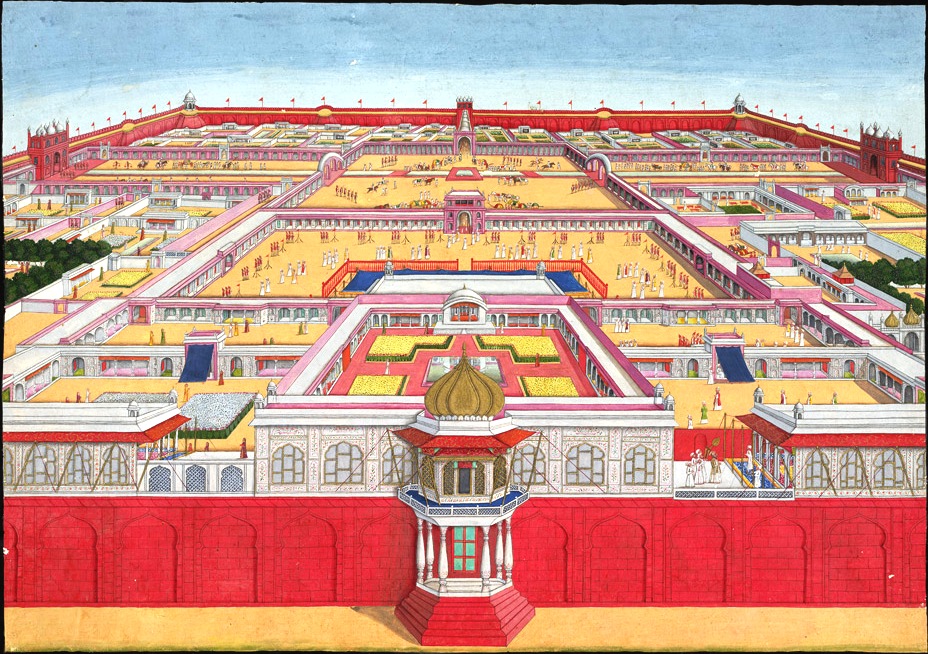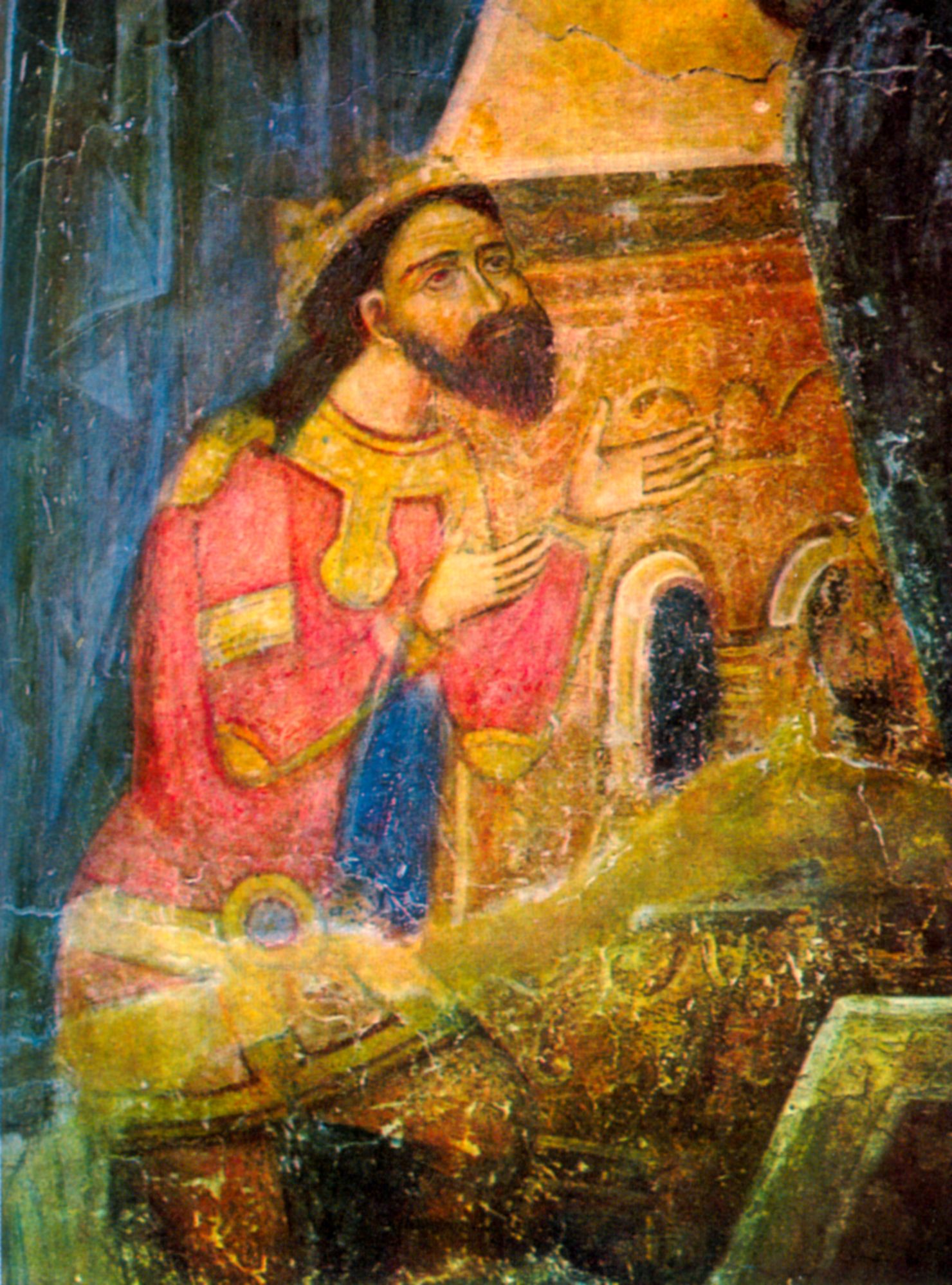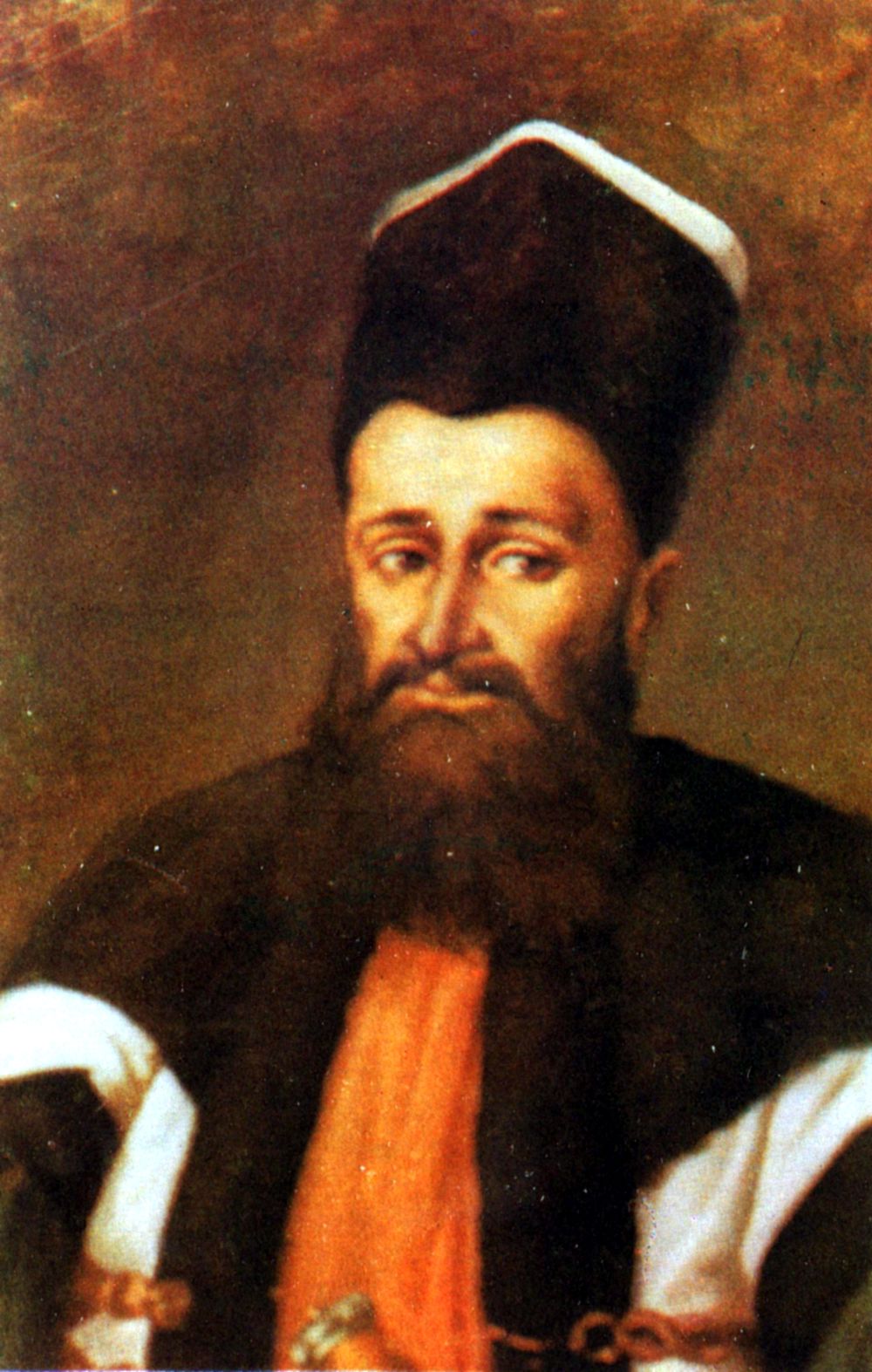|
Nicholas Caradja
Nicholas Caradja ( el, Νικόλαος Καρατζάς, ro, Nicolae Vodă Caragea; 1737–1784) was a Phanariote Prince of Wallachia, who reigned between 15 January 1782 and 17 July 1783. Early life He was born as the son of Prince Konstantin Caradja (d. 1771) and his wife, Zefira Soutzos (d. 1791). Biography Prior to his reign, he was the Grand Dragoman of the Ottoman Empire in Constantinople (1777–1782). Reign Under his reign, police provisions taken concerned public hygiene such as chimney sweeping and the control of coffeehouses, inns, and ways. Unauthorized carrying of uniforms and weapons was prohibited, in order to avoid mutiny by those opposed to his taxation policy. Passports were introduced during his reign. both to control the entry of foreigners and the exit of the discontented. Marriage and issue He was married to Tarisa Michalopoulos and had: * Eufrosona Caradja; married Prince Dimitrius Ghica * Zamfira Caradja; married Prince Alexander Mavro ... [...More Info...] [...Related Items...] OR: [Wikipedia] [Google] [Baidu] |
List Of Rulers Of Wallachia
This is a list of rulers of Wallachia, from the first mention of a medieval polity situated between the Southern Carpathians and the Danube until the union with Moldavia in 1859, which led to the creation of Romania. Notes Dynastic rule is hard to ascribe, given the loose traditional definition of the ruling family. On principle, princes were chosen from any family branch, including a previous ruler's bastard sons, being defined as ''os de domn'', "of Voivode marrow", or as having ''heregie'', "heredity" (from the Latin ''hereditas''); the institutions charged with the election, dominated by the boyars, had fluctuating degrees of influence. The system itself was challenged by usurpers, and became obsolete with the Phanariote epoch, when rulers were appointed by the Ottoman Sultans; between 1821 and 1878 (the date of Romania's independence), various systems combining election and appointment were put in practice. Wallachian rulers, like the Moldavian rulers, bore the titles of ''V ... [...More Info...] [...Related Items...] OR: [Wikipedia] [Google] [Baidu] |
Boyars Of Moldavia And Wallachia
The boyars of Moldavia and Wallachia were the nobility of the Danubian Principalities of Moldavia and Wallachia. The title was either inherited or granted by the Hospodar, often together with an administrative function.Djuvara, p.131 The boyars held much of the political power in the principalities and, until the Phanariote era, they elected the Hospodar. As such, until the 19th century, the system oscillated between an oligarchy and an autocracy with the power concentrated in the hospodar's hands.Djuvara, p.135 Origins During the Middle Ages, Romanians lived in autonomous communities called obște which mixed private and common ownership, employing an open field system. The private ownership of land gained ground In the 14th and 15th centuries, leading to differences within the obște towards a stratification of the members of the community.Costăchel et al., p. 111 The name of the "boyars" (''boier'' in Romanian; the institution being called ''boierie'') was patented from the ... [...More Info...] [...Related Items...] OR: [Wikipedia] [Google] [Baidu] |
1737 Births
Events January–March * January 5 – Spain and the Holy Roman Empire sign instruments of cession at Pontremoli in the Grand Duchy of Tuscany in Italy, with the Empire receiving control of Tuscany and the Grand Duchy of Parma and Piacenza, in return for Don Carlos of Spain being recognized as King of Naples and King of Sicily. * January 9 – The Empires of Austria and Russia enter into a secret military alliance that leads to Austria's disastrous entry into the Russo-Turkish War. * January 18 – In Manila, a peace treaty is signed between Spain's Governor-General of the Philippines, Fernándo Valdés y Tamon, and the Sultan Azim ud-Din I of Sulu, recognizing Azim's authority over the islands of the Sulu Archipelago. * February 20 – France's Foreign Minister, Germain Louis Chauvelin, is dismissed by King Louis XV's Chief Minister, Cardinal André-Hercule de Fleury * February 27 – French scientists Henri-Louis Duhamel du Monceau and Georges ... [...More Info...] [...Related Items...] OR: [Wikipedia] [Google] [Baidu] |
Rulers Of Wallachia
This is a list of rulers of Wallachia, from the first mention of a medieval polity situated between the Southern Carpathians and the Danube until the union with Moldavia in 1859, which led to the creation of Romania. Notes Dynastic rule is hard to ascribe, given the loose traditional definition of the ruling family. On principle, princes were chosen from any family branch, including a previous ruler's bastard sons, being defined as ''os de domn'', "of Voivode marrow", or as having ''heregie'', "heredity" (from the Latin ''hereditas''); the institutions charged with the election, dominated by the boyars, had fluctuating degrees of influence. The system itself was challenged by usurpers, and became obsolete with the Phanariote epoch, when rulers were appointed by the Ottoman Sultans; between 1821 and 1878 (the date of Romania's independence), various systems combining election and appointment were put in practice. Wallachian rulers, like the Moldavian rulers, bore the titles of ''V ... [...More Info...] [...Related Items...] OR: [Wikipedia] [Google] [Baidu] |
Romanian People Of Greek Descent
Romanian may refer to: *anything of, from, or related to the country and nation of Romania **Romanians, an ethnic group **Romanian language, a Romance language ***Romanian dialects, variants of the Romanian language **Romanian cuisine, traditional foods **Romanian folklore *Romanian (stage), a stage in the Paratethys The Paratethys sea, Paratethys ocean, Paratethys realm or just Paratethys was a large shallow inland sea that stretched from the region north of the Alps over Central Europe to the Aral Sea in Central Asia. Paratethys was peculiar due to its pa ... stratigraphy of Central and Eastern Europe *'' The Romanian'' newspaper *'' The Romanian: Story of an Obsession'', a 2004 novel by Bruce Benderson * * {{disambiguation Language and nationality disambiguation pages ... [...More Info...] [...Related Items...] OR: [Wikipedia] [Google] [Baidu] |
Dragomans Of The Porte
The Dragoman of the Sublime Porte ( Ottoman Turkish: ; el, �έγαςδιερμηνέας της Υψηλής Πύλης), Dragoman of the Imperial Council (''tercümân-ı dîvân-ı hümâyûn''), or simply Grand or Chief Dragoman (''tercümân başı''), was the senior interpreter of the Ottoman government and ''de facto'' deputy foreign minister. From the position's inception in 1661 until the outbreak of the Greek Revolution in 1821, the office was occupied by Phanariotes, and was one of the main pillars of Phanariote power in the Ottoman Empire. History In the Ottoman Empire, the existence of official interpreters or dragomans (from the Italian rendering of Arabic , Ottoman ) is attested from the early 16th century. They were part of the staff of the ('head secretary'), who was responsible for foreign affairs within the Imperial Council. As few Ottoman Turks ever learned European languages, from early times the majority of these men were of Christian origin—in the mai ... [...More Info...] [...Related Items...] OR: [Wikipedia] [Google] [Baidu] |
Caradja Family
The House of Caradja, Karadja, Karaca, or Caragea (also known as ''Caratzas'' and ''Karatzas'', el, Καρατζάς) is a princely house of Byzantine and Phanariote Greek origins, present as dignitaries in the Ottoman Empire, and established as boyars and hospodars in the Danubian Principalities from the late 16th century. Origins The princely House of Caradja originated in the Byzantine Empire, probably in the capital Constantinople. The earliest mentions of the family's history are present in historian Anna Komnene's ''Alexiad''. In 1091, Emperor Alexios I Komnenos sent Argyros Karatzas to Dalmatia, and appointed him '' doux'' of Dyrrhachium and of Philippopolis in 1094.V. Laurent, "Argyros Karatzas, protokuropalates et duc de Philippopolis" , Revista Istorica 29 (1943), 203-210 In the year 1453, during events surrounding the Fall of Constantinople, Eusthatios Karadja was mentioned as the intermediary between Patriarch Gennadius II Scholarius and Sultan Mehmed II. In 1591 ... [...More Info...] [...Related Items...] OR: [Wikipedia] [Google] [Baidu] |
List Of Wallachian Rulers
This is a list of rulers of Wallachia, from the first mention of a medieval polity situated between the Southern Carpathians and the Danube until the union with Moldavia in 1859, which led to the creation of Romania. Notes Dynastic rule is hard to ascribe, given the loose traditional definition of the ruling family. On principle, princes were chosen from any family branch, including a previous ruler's bastard sons, being defined as ''os de domn'', "of Voivode marrow", or as having ''heregie'', "heredity" (from the Latin ''hereditas''); the institutions charged with the election, dominated by the boyars, had fluctuating degrees of influence. The system itself was challenged by usurpers, and became obsolete with the Phanariote epoch, when rulers were appointed by the Ottoman Sultans; between 1821 and 1878 (the date of Romania's independence), various systems combining election and appointment were put in practice. Wallachian rulers, like the Moldavian rulers, bore the titles of ''V ... [...More Info...] [...Related Items...] OR: [Wikipedia] [Google] [Baidu] |
Grand Dragoman Of The Porte
The Dragoman of the Sublime Porte (Ottoman Turkish: ; el, �έγαςδιερμηνέας της Υψηλής Πύλης), Dragoman of the Imperial Council (''tercümân-ı dîvân-ı hümâyûn''), or simply Grand or Chief Dragoman (''tercümân başı''), was the senior interpreter of the Ottoman government and ''de facto'' deputy foreign minister. From the position's inception in 1661 until the outbreak of the Greek Revolution in 1821, the office was occupied by Phanariotes, and was one of the main pillars of Phanariote power in the Ottoman Empire. History In the Ottoman Empire, the existence of official interpreters or dragomans (from the Italian rendering of Arabic , Ottoman ) is attested from the early 16th century. They were part of the staff of the ('head secretary'), who was responsible for foreign affairs within the Imperial Council. As few Ottoman Turks ever learned European languages, from early times the majority of these men were of Christian origin—in the main ... [...More Info...] [...Related Items...] OR: [Wikipedia] [Google] [Baidu] |
Constantine Mourouzis
Constantine Demetrius Mourouzis ( el, Κωνσταντίνος Δημήτριος Μουρούζης, Konstantinos Demetrios Mourouzis, ro, Constantin Dimitrie Moruzi), (1730 – 1 May 1787) was a Phanariote Prince of Moldavia, and member of the Mourousis family. A remarkable polyglot, he spoke five languages: Greek, Latin, French, Arabic and Turkish. In 1761, he became Grand ''Postelnic'' (foreign minister) in Moldavia, and soon after Dragoman of the Fleet (deputy minister) of the Ottoman Admiralty, and eventually Grand Dragoman. There are indications that he was politically involved in the dismissal and assassination of his predecessor, Grigore III Ghica, by the Porte.Brezianu, Andrei and Spânu, Vlad (eds.) (2007) "Moruzi. Constantin" ''Historical Dictionary of Moldova'' (2nd ed.) Scarecrow Press, Lanham, Maryland, USA, p. 250, Trusted by the Porte, he obtained the throne of Moldavia on October 12, 1770. Mourouzis spent much of his time in Iaşi, supervising the gatherin ... [...More Info...] [...Related Items...] OR: [Wikipedia] [Google] [Baidu] |
Dragoman Of The Fleet
The Dragoman of the Fleet ( Ottoman Turkish: , 'Dragoman of the Arsenal'; el, δραγουμάνος του στόλου) was a senior office in the Ottoman Empire, held by Phanariote Greeks during the 18th and early 19th centuries. As the chief deputy of the Kapudan Pasha, the Dragoman of the Fleet played a leading role in the administration of the various autonomous communities of the islands and coasts of the Aegean Sea that fell within the Eyalet of the Archipelago. History The office was established in 1701, in emulation of the Grand Dragoman of the Sublime Porte, which was also reserved for Phanariotes. Indeed, the post of Dragoman of the Fleet often served as a stepping-stone to that of Grand Dragoman. The dragoman (the term means 'interpreter') had to be proficient in the "three languages" () of Arabic, Persian, and Turkish that were commonly used in the empire, as well as a number of foreign languages (usually French and Italian), but his role went far beyond a mere int ... [...More Info...] [...Related Items...] OR: [Wikipedia] [Google] [Baidu] |
Mourouzis Family
The House of Mourouzis ( el, Μουρούζης) or Moruzi (russian: Мурузи, Muruzi) is the name of an old and distinguished noble family which was first mentioned in the Empire of Trebizond, whose members later occupied many important positions within Ottoman Empire, Wallachia, Moldavia, Russian Empire and Romania. History Its origins have been lost, but the two prevalent theories are that they were either a local family originating in a village which has a related name or else one that arrived with the Venetians during the Fourth Crusade (since there are records of a Venetian family with a similar name a generation earlier). They became one of the leading families of Phanariotes. The family moved to present-day Romania (the Danubian Principalities) in the 17th century, became Dragomans of the Porte and boyars, and gave Wallachia and Moldavia two ''hospodars'' – Princes Constantine and Alexander. Constantine's great grandson Demetrius fled to Russia after the outbr ... [...More Info...] [...Related Items...] OR: [Wikipedia] [Google] [Baidu] |







